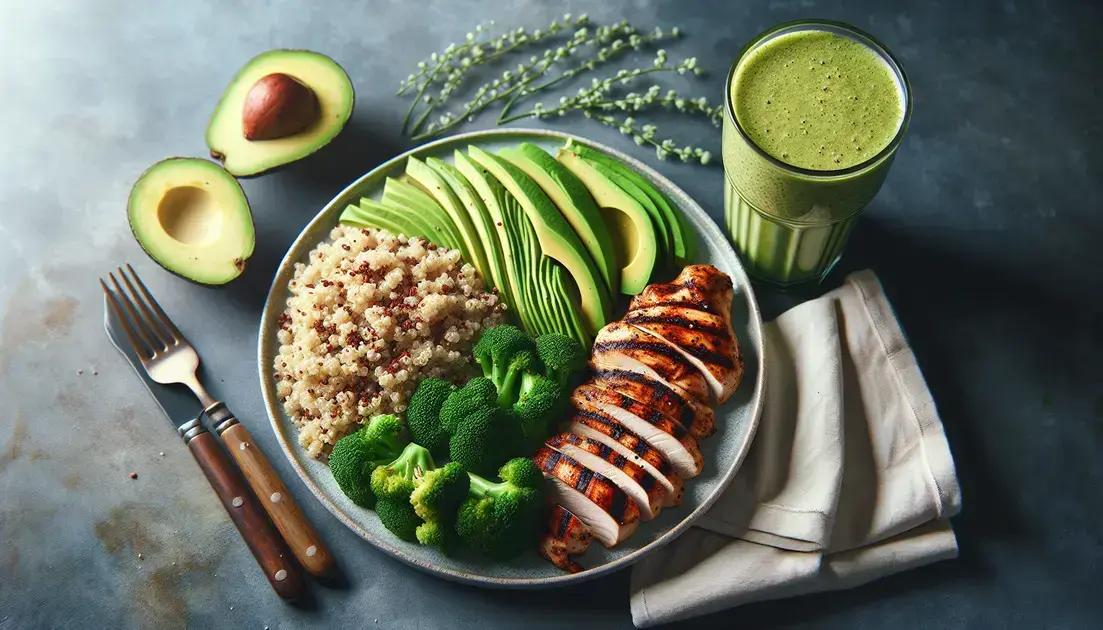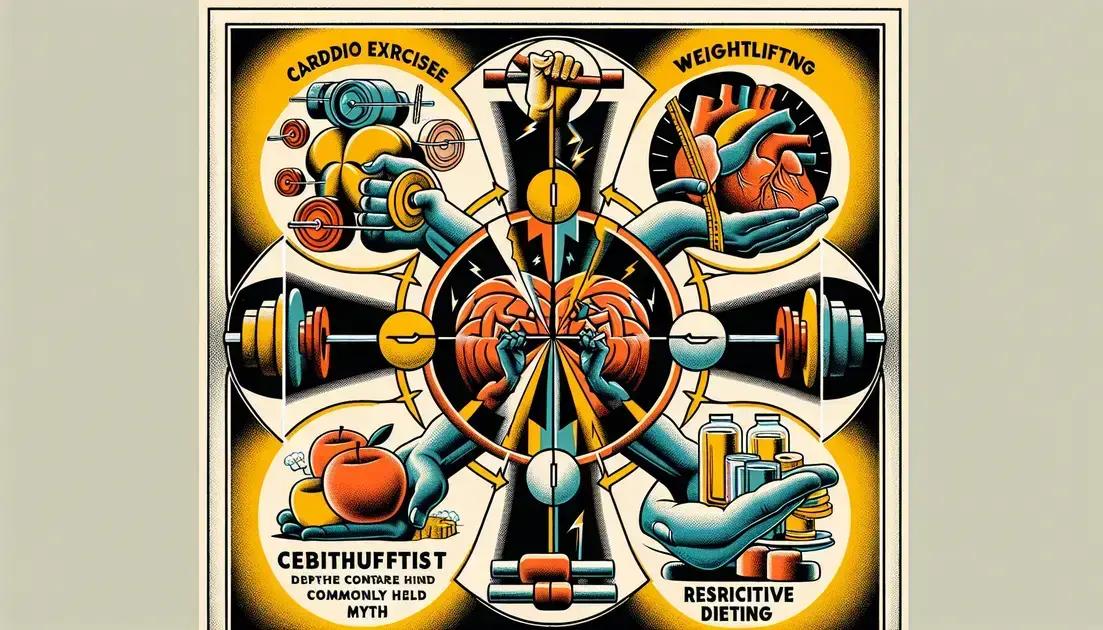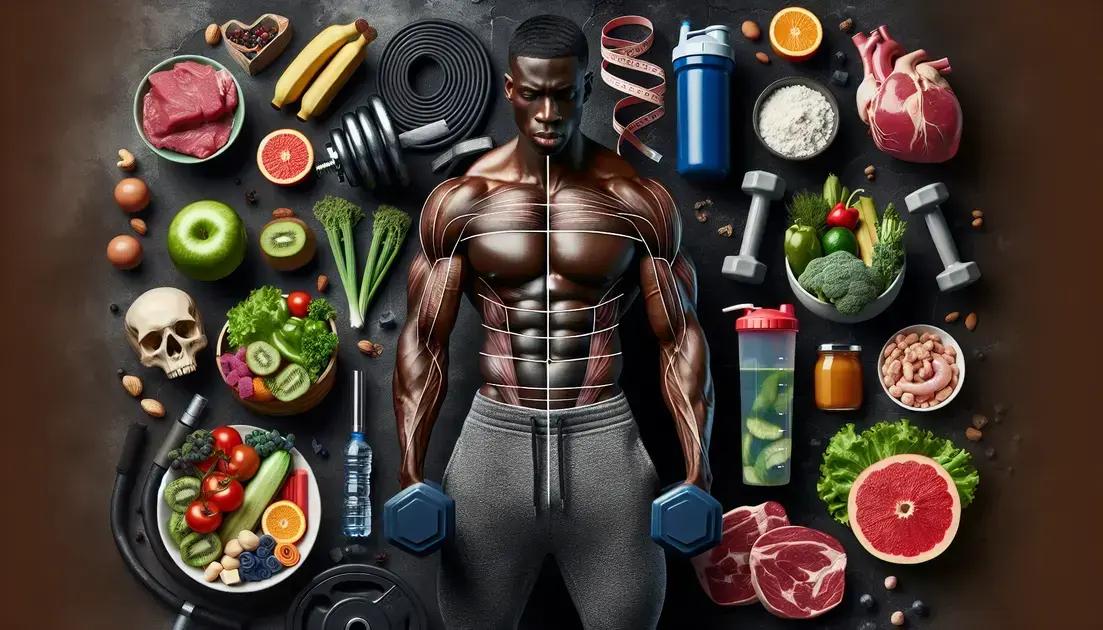Can I Lose Fat and Gain Muscle at the Same Time? Discover How Now
Yes, you can lose fat and gain muscle simultaneously through body recomposition. By combining a high-protein diet, calorie management, strength training, and tracking progress, you can achieve these dual fitness goals. Consistency, proper recovery, and motivation are key to maximizing results effectively.
Can you lose fat and gain muscle at the same time? This question sparks curiosity among fitness enthusiasts and beginners alike. The answer lies in mastering the delicate balance between a proper diet, strategic workouts, and understanding your body’s capabilities. In this post, we’ll delve into key strategies, common misconceptions, and proven techniques to help you achieve your dual fitness goals effectively.
The Science Behind Losing Fat and Gaining Muscle
The process of losing fat while gaining muscle simultaneously is rooted in a concept known as body recomposition. This involves strategically managing your caloric intake, exercise routines, and recovery processes to achieve a balance where your body burns fat for energy while building muscle.
Understanding Energy Balance
To lose fat, your body requires a calorie deficit, meaning you consume fewer calories than you burn. Conversely, gaining muscle typically requires a calorie surplus. Body recomposition achieves both by timing and tailoring your nutrition and workouts to optimize these processes.
Role of Protein in Muscle Growth and Fat Loss
Protein consumption plays a critical role in this process. A high-protein diet supports muscle protein synthesis, even during a calorie deficit, while also promoting fat loss by increasing satiety and preserving lean body mass.
Hormonal Influence
Hormones like insulin, growth hormone, and testosterone significantly impact your ability to lose fat and gain muscle. Maintaining stable insulin levels through balanced meals and engaging in resistance training helps optimize fat metabolism and muscle growth.
By addressing these scientific principles and applying them strategically, achieving fat loss and muscle gain simultaneously becomes a realistic and attainable goal.
Nutrition Guidelines for Achieving Both Goals

Proper nutrition is a cornerstone for losing fat and gaining muscle simultaneously. Balancing your macronutrient intake and strategically planning your meals can make achieving both goals manageable and effective.
Focus on Protein Intake
A high-protein diet is essential for muscle repair and growth. Aim to consume 0.8-1 gram of protein per pound of body weight daily. Include sources like lean meats, eggs, tofu, and legumes to support muscle building while aiding fat loss.
Manage Calorie Intake Wisely
To lose fat while supporting muscle growth, calculate your daily caloric needs accurately. Opt for a small calorie deficit, around 250-500 calories per day, to promote fat loss while providing enough energy to maintain and build muscle.
Prioritize Nutrient Timing
Time your meals around workouts to maximize results. Consuming a combination of carbs and protein post-workout helps replenish glycogen stores and facilitates muscle recovery. Examples include a protein shake with a banana or grilled chicken with sweet potatoes.
Incorporate Healthy Fats and Carbs
Include healthy fats like avocados, olive oil, and nuts to support hormone production essential for muscle building. Choose complex carbs like oats, quinoa, and brown rice to fuel energy for intense workouts while avoiding fat storage.
By implementing these nutrition strategies, you can create a foundation that efficiently supports both fat loss and muscle gain.
Effective Workouts to Burn Fat and Build Muscle
Combining strength training with cardiovascular exercises is key to burning fat and building muscle effectively. The right workout plan will target both goals simultaneously by focusing on intensity, consistency, and variety.
Incorporate Strength Training
Engage in resistance training at least 3-4 times per week. Exercises like squats, deadlifts, bench presses, and rows are compound movements that help build muscle while burning calories. Prioritize progressive overload by gradually increasing the weight or intensity.
Use High-Intensity Interval Training (HIIT)
HIIT workouts efficiently burn fat while preserving muscle. Alternate between short bursts of high-intensity activities, like sprints or jump squats, and low-intensity recovery periods. Just 20-30 minutes of HIIT 2-3 times per week can achieve significant results.
Combine Cardio with Weights
Pairing traditional cardio exercises, such as cycling or jogging, with weightlifting is a powerful combination for reducing fat while retaining muscle. Perform 10-20 minutes of moderate cardio post-strength training to maximize fat-burning.
Utilize Bodyweight Exercises
Bodyweight exercises such as push-ups, lunges, and pull-ups are highly effective for building strength and endurance. Adding these movements to your routine allows you to stay active without requiring gym equipment.
By employing a well-rounded workout plan, you can optimize fat loss and muscle gain, ensuring that your training aligns with your fitness goals.
Common Myths Debunked About Fat Loss and Muscle Gain

There are many myths about fat loss and muscle gain that can cause confusion and mislead your fitness journey. Debunking these common misconceptions can help clarify the process and set realistic expectations.
Myth #1: You Can’t Lose Fat and Gain Muscle at the Same Time
It’s a common belief that these two goals are mutually exclusive. However, with the right balance of nutrition, strength training, and recovery, it is possible to achieve body recomposition. Research supports that calorie cycling and sufficient protein intake play a critical role in accomplishing both.
Myth #2: Cardio Is the Only Way to Burn Fat
While cardio helps burn calories, strength training is equally effective for fat loss. Building muscle increases your resting metabolic rate, allowing your body to burn more calories even when at rest. Combining cardio and resistance training yields optimal results.
Myth #3: Lifting Heavy Weights Makes You Bulky
This myth often discourages people, especially women, from lifting weights. In reality, heavy lifting promotes lean muscle growth while aiding fat loss. Bulking up requires a specific diet and training regimen, which is not achieved accidentally.
Myth #4: More Workouts Equal Better Results
Overtraining can hinder progress by causing fatigue and increasing the risk of injury. Incorporating rest days into your routine is essential for muscle recovery and sustained fat loss. Quality and consistency matter more than quantity.
Myth #5: You Must Follow a Strict Diet
While diet is important, you don’t need extreme restrictions. Flexible eating, which focuses on macronutrient balance, can be more sustainable and effective in the long term. A diet that works for your lifestyle is key to achieving your goals.
By identifying and overcoming these myths, you can build a more informed and effective fat loss and muscle gain strategy without unnecessary hurdles.
How to Track Your Progress Effectively
Tracking your progress accurately is essential for ensuring success in losing fat and gaining muscle. Using a combination of methods can help you monitor improvements and adjust your approach effectively.
Take Regular Body Measurements
Measure key areas such as waist, hips, chest, arms, and thighs every two weeks using a measuring tape. This provides tangible data to track body composition changes.
Monitor Your Weight Fluctuations
Weigh yourself once a week at the same time and under similar conditions. Keep in mind that muscle gain may offset fat loss, so weight alone may not show the full picture.
Track Body Fat Percentage
Use tools like bioelectrical impedance scales or calipers to estimate body fat percentage. Lowering body fat while maintaining or increasing muscle mass indicates positive progress.
Keep a Workout Log
Document exercises, weights lifted, reps, and sets in a fitness journal or app. This helps track performance and ensures progressive overload for muscle growth.
Take Progress Photos
Capture photos every 4-6 weeks from multiple angles under consistent lighting. Visual changes in definition and tone often reveal results not reflected on the scale.
Pay Attention to Energy Levels and Strength
Improved energy during workouts and strength gains indicate that your current routine is effective. Keep note of personal bests and endurance improvements.
By combining these tracking methods, you create a comprehensive picture of your progress, motivating you to stay consistent with your fitness journey.
Tips for Staying Motivated on Your Dual Fitness Journey

Staying motivated on your journey to lose fat and gain muscle can be challenging, but adopting strategies to maintain focus and enthusiasm will keep you on track.
Set Clear and Realistic Goals
Define both short-term and long-term targets. Short-term goals, like increasing weights or meal prepping weekly, provide quick wins, while long-term goals can keep you dedicated.
Track Small Victories
Celebrate progress, such as completing an extra rep or noticing improved muscle definition. Acknowledging small milestones helps build momentum and encourages consistency.
Find an Accountability Partner
Share your goals with a friend, family member, or workout buddy. Having someone to check in with can boost motivation and provide a support system.
Switch Up Your Routine
Boredom can lead to skipping workouts. Alternate between different exercises, try new fitness classes, or experiment with outdoor activities to keep things exciting.
Reward Yourself
Plan rewards for meeting certain targets, such as buying new workout gear or enjoying a relaxing spa day. Rewards reinforce positive behavior and give you something to look forward to.
Visualize Your Progress
Create a vision board with inspiring fitness quotes, before-and-after photos, or your end goals. Seeing your desired outcome every day helps you stay focused and motivated.
By incorporating these strategies, you can remain committed to your fitness goals while staying energized and positive throughout the journey.
Combining Fat Loss and Muscle Gain Is Achievable
Achieving the balance between losing fat and gaining muscle may seem challenging, but with the right strategy, it is entirely attainable. Understanding the science behind body recomposition sets a solid foundation for success.
Focusing on proper nutrition, incorporating effective workouts, and debunking common myths can streamline your fitness approach. Tracking progress through measurable methods and using tips to stay motivated ensures that you remain consistent and enthusiastic about your journey.
With dedication, patience, and the integration of these well-rounded techniques, reaching your dual fitness goals becomes a clear and rewarding possibility. Stay committed to the process, and you’ll see the results you desire over time.
FAQ – Common Questions About Losing Fat and Gaining Muscle
Can I really lose fat and gain muscle at the same time?
Yes, with the right combination of nutrition, strength training, and recovery, it is possible to lose fat and build muscle simultaneously.
What’s the most important nutrient to focus on for this goal?
Protein is essential as it supports muscle growth and repair while helping with fat loss by promoting satiety and preserving lean mass.
Do I need to do cardio or just lift weights?
Both are beneficial. Strength training builds muscle, while cardio burns calories. Combining the two maximizes fat loss and muscle retention.
How often should I take progress measurements?
Every 2-4 weeks is ideal to track changes in body composition, strength, and overall fitness effectively.
Does lifting heavy weights make me bulky?
No, lifting heavy weights promotes lean muscle growth. Becoming bulky requires a specific training and diet regimen not achieved accidentally.
How can I stay motivated while working toward these goals?
Set realistic goals, track small wins, reward yourself, and keep your routine exciting with different workouts or activities.













